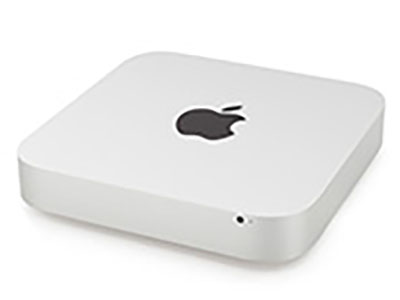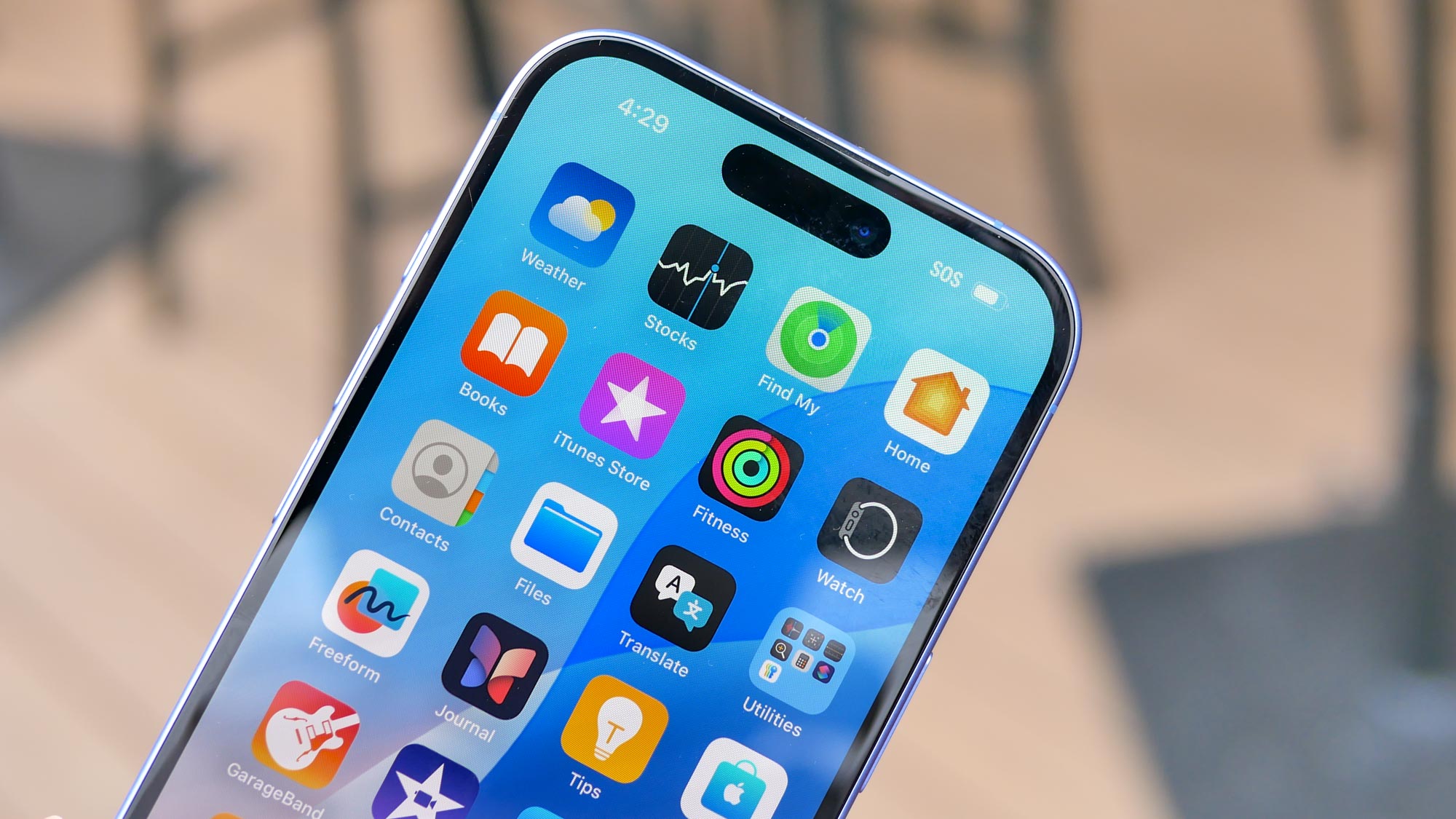Tom's Guide Verdict
The Mac mini (late 2014 edition) is an affordable and attractive OS X machine, though it sacrifices the upgradability of previous models.
Pros
- +
Attractive design
- +
Thunderbolt 2 support
- +
Useful OS X apps
- +
Affordable
Cons
- -
Bigger and heavier than other mini PCs
- -
No swappable components
Why you can trust Tom's Guide
The Mac mini (starting at $499) is the smallest and most affordable member of Apple's Mac family, and has the potential to be the most versatile. Its svelte design makes an attractive addition to your workspace, and unlike with a MacBook or an iMac, you get to decide exactly which monitor and peripherals to use with it. The latest version of Apple's mini PC has faster processors and useful new ports, though its lack of swappable components means that you won't get to upgrade it over time.
Editor's Note: Apple has announced a new Mac mini, which will be shipping November 7th, 2018. Read our write up of the announcement for all the details.
Design
Like its predecessors, the latest Mac mini packs the complete OS X experience into a sleek, square package. The mini PC's all-aluminum, curved-edge construction exudes Apple's knack for minimalism, with nothing but a power indicator and an Apple logo visible from the front.
At 7.7 x 7.7 x 1.4 inches and 2.6 pounds, the Mac mini is the most space-saving Mac desktop you can find. In comparison, the iMac measures 20.8 x 17.7 x 6.9 inches and weighs 12.5 pounds, while the Mac Pro tower measures 9.9 x 6.6 inches and weighs 11 pounds.
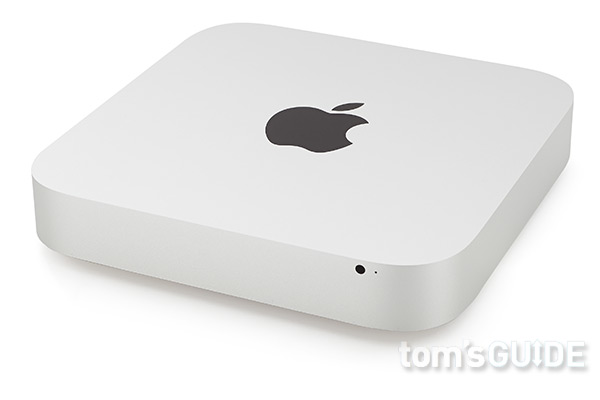
Though it's the most compact Mac, the Mini is far from the smallest and lightest mini PC. The Intel NUC (4.5 x 4.4 x 1.3 inches) and HP Stream Mini (5.73 x 5.7 x 2.1 inches) are both significantly more compact.
Unlike the 2012 version, the new Mac mini's black, circular bottom panel can't be easily twisted off, and you can no longer swap out the RAM or storage. You'll now have to pry open the panel with a tool (we used a screwdriver), and the only removable component is the PC's Wi-Fi module.
Ports and Connectivity
On the back of the Mac mini, you'll find an HDMI port, four USB 3.0 connections, an SDXC card slot, and audio-in and headphone jacks. New to the Mac mini are its two Thunderbolt 2 ports, which allow for extra-fast data transfers and are ideal for connecting to 4K monitors.
The Mac mini touts 802.11ac Wi-Fi support for getting online, as well as Bluetooth 4.0 for connecting to your wireless gadgets. The PC also packs an Ethernet port for wired Internet, which you won't find on any current MacBook.
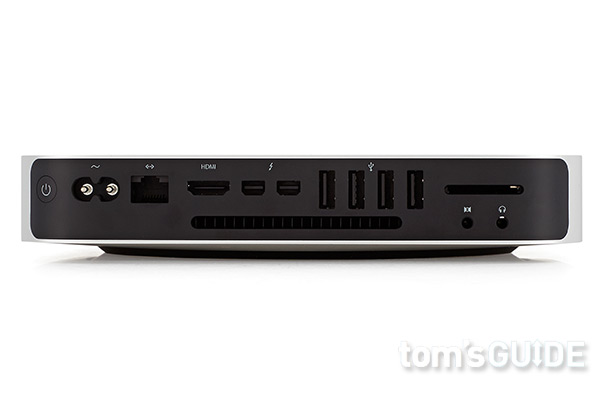
The Mac mini's port selection includes everything you'd expect from a modern PC, and the Thunderbolt 2 connections add some welcome productivity options. However, while its rear-facing ports help maintain the sleek computer's seamless design, they sacrifice some convenience; I would have preferred to have access to a headphone slot and at least one USB port in the front.
MORE: Best All-in-One PCs
Performance
Packing a 4th-generation, 1.4-GHz Intel Core i5 processor and 4GB of RAM, our Mac mini handled basic entertainment and productivity tasks with ease. When playing around in GarageBand while simultaneously streaming HD video from Netflix and YouTube, I didn't experience a hint of slowdown.
The Mac mini scored 5,443 on the Geekbench 3 test, which measures a machine's overall performance. This score is lower than the Intel NUC's 6,039, (1.6-GHz, 5th-gen Core i5, 8GB of RAM), the ThinkCentre M83's 8,522 (2-GHz Core i5-4590T, 8GB of RAM) and the 7,013 all-in-one PC average. The Mac mini performed almost identically to Apple's 2014 iMac all-in-one (5,464), which packs the same processor as the mini but with 8GB of RAM.
Apple's mini computer had little trouble with our spreadsheet test, matching 20,000 names to their addresses in 6 minutes and 17 seconds. While it wasn't quite as fast as the NUC (5:02), the ThinkCentre (4:31) or its iMac cousin (3:49), the mini edged out our 6:26 all-in-one PC average.
Our Mac mini's 500GB, 5,400-rpm hard drive copied 4.97GB of mixed media in 2 minutes and 28 seconds, resulting in a file-transfer rate of 34.4 MBps. While this rate is comparable to that scored by the iMac's identical hard drive (38.5 MBps), the Mac mini performed about half as quickly as the 69 MBps all-in-one desktop average. The mini couldn't come close the NUC's PCIe x4 SSD or the ThinkCentre's 500GB, 7,200-rpm hard drive, which registered a blazing 309 and 138 MBps, respectively.
Graphics Performance
With its integrated Intel HD Graphics 5000, our starting configuration of the Mac mini is far from a graphical powerhouse, but it can still handle a few non-demanding games.
The mini PC ran World of Warcraft at a playable 30 frames per second at 1080p with autodetect on, but stumbled when the settings were turned up. The NUC notched only 26 fps under the same settings, and both PCs fell to the high teens with the graphics kicked to ultra.
The Mac mini registered 22.97 fps on the OpenGL portion of the Cinebench benchmark, which tests a machine's GPU. Apple's computer fell behind the Intel HD 6000-powered NUC (33.57 fps), and mustered less than half of our 54-fps average for all-in-one desktops.
OS X Yosemite and Apps
The Mac mini ships with Apple's OS X Yosemite, which adds some useful new tweaks to Apple's operating system while allowing your Mac to work seamlessly with your iOS devices.
As long as your Mac and iPhone or iPad are connected to the same Wi-Fi network (and are logged in to the same iCloud account), you can answer calls and texts from the desktop without reaching for your phone. With the new Handoff feature, you can start composing a text, email or document on your iOS device and finish it on your Mac (or vice versa) with a single click.
The Handoff feature worked seamlessly in my testing — whenever I started composing a note or message on my iPhone, I immediately saw a prompt on my OS X dock to transfer it to a Mac. I was able to pull up a website on one device and transfer it to the other, and was able to receive and answer my iPhone's calls right from the Mac dashboard.
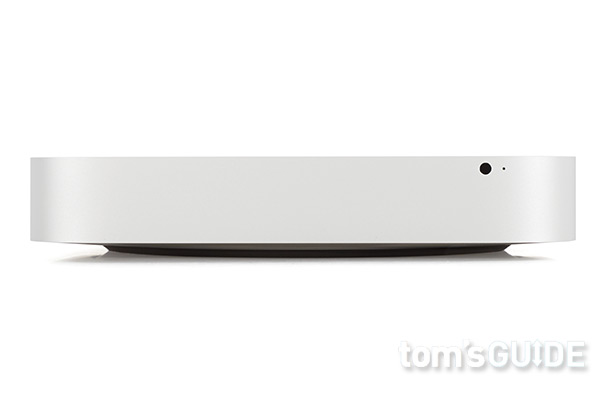
Yosemite introduces a flatter, cleaner, iOS 8-esque aesthetic, with revamped versions at Notification Center, Calendar and Safari that closely mimic their mobile counterparts. If you happen to be using the Mac mini somewhere without Wi-Fi, you can use Yosemite's Instant Hotspot feature to get connected via your iPhone.
Packing standard-issue Mac apps such as GarageBand, iMovie, Pages, Keynotes and Numbers, the Mac mini offers plenty of built-in options for creative professionals and business users. You can expand your app collection via the Mac App Store, which features popular apps and games such as Kindle, Logic Pro X, BioShock Infinite and Batman: Arkham City.
MORE: Best Mac Apps
Configurations and Upgradability
The Mac mini's starting $499 configuration packs a 1.4-GHz Intel Core i5 processor; 4GB of RAM; a 500GB, 5,400-rpm hard drive; and Intel HD Graphics 5000. You can upgrade to up to 16GB of RAM for an extra $300, and add a 1TB Fusion Drive for $250.
The $699 configuration gets you a faster 2.6-GHz Core i5 CPU, doubles the storage to 1TB, and packs 8GB of RAM and Intel Iris Graphics. You can bump the CPU to a 3.0-GHz Core i7 for $300, add 16GB RAM for $200 and add up to a 1TB Fusion Drive for $200.
If you shell out for the $999 unit, you'll get a 2.8-GHz Core i5 processor and a 1TB Fusion Drive with the same RAM and graphics as the previous config. Optional upgrades include a 3.0-GHz CPU for $200, 16GB of RAM for $200 and up to 1TB of PCIe flash storage for $800.
The Mac mini ships without a keyboard, mouse or monitor, so you'll have to use your own peripherals or buy new ones.
Value: Which Mac Is for You?
The Mac mini is the cheapest of Apple's desktops, but each of Apple's home computers has its own advantages. If you want similar specs and don't want to fetch your own monitor and accessories, the $999 iMac provides a complete OS X experience out of the box. However, because the iMac is tied to its monitor, you won't be able to throw it in your bag or easily hook it up to your TV as you can with the Mini.
While the Mac mini and iMac are for everyday consumers, the Mac Pro is built for power users. You'll have to shell out $3,000 to get your hands on one (no monitor or accessories included), but you'll be getting a beefy quad-core Xeon E5 processor, 12GB of RAM and dual AMD FirePro D300 GPUs in return.
Bottom Line
The 2014 Mac mini (starting at $499) is an attractive, affordable and efficient OS X machine. The PC's Thunderbolt 2 ports and Intel Iris Pro graphics support will come in handy for creative professionals and power users, while the machine's 4th-gen Intel Core i5 processor provides more than enough power for Web surfing and entertainment. And though it's not the most miniature mini PC around, the Mac mini still looks slick on your desk or next to your TV.
You can no longer swap out the Mac mini's RAM and storage, which could make the PC less useful over time as you run out of storage or run apps that max out your memory. Mac fans should also consider the $999 iMac, which offers comparable performance with an included display, mouse and keyboard. Still, as a low-cost, hassle-free OS X machine that works with your choice of peripherals, the Mac mini delivers.
Our Apple coupon codes can help you save on their devices and accessories, allowing you to enjoy cutting-edge technology without breaking the bank.
Mike Andronico is Senior Writer at CNNUnderscored. He was formerly Managing Editor at Tom's Guide, where he wrote extensively on gaming, as well as running the show on the news front. When not at work, you can usually catch him playing Street Fighter, devouring Twitch streams and trying to convince people that Hawkeye is the best Avenger.
-
c_etude DO NOT BUY THIS! You cannot upgrade it. 4 gb RAM doesn't do squat. YOU WILL REGRET IT.Reply -
inCR Mike, as a Tom's Hardware review this missed both the hardware and the Mac Mini's legacy. Not everyone plays games on their computer and some of us need powerful machines to support VMs (virtual machines) like Parallels and Fusion.Reply
The Mini no longer offers a quad core option (your hardware article did not even mention cores!) so even a maxed-out memory, solid-state model won't match the older 2012 quad core performance. That would have been useful to note. -
Titillating Reply15610514 said:Mike, as a Tom's Hardware review this missed both the hardware and the Mac Mini's legacy. Not everyone plays games on their computer and some of us need powerful machines to support VMs (virtual machines) like Parallels and Fusion.
The Mini no longer offers a quad core option (your hardware article did not even mention cores!) so even a maxed-out memory, solid-state model won't match the older 2012 quad core performance. That would have been useful to note.
This is a Tom's Guide review and focuses on the consumer segment of things, and not necessarily the power users who actually make use of VMs. Although Tom's Guide is under the same general branding as Tom's Hardware, they target different demographics and so the reviews will differ in levels of technical details. Let's face it, your average consumer is not going to be concerned with VMs, or with quad-core or dual-core; they'll care that this is a tiny, Apple-branded product at a low price point (compared to the rest of their products). -
inCR After years following Tom's Hardware I hope you'll forgive my confusion with the Tom's Guide rebranding for a consumer focus.Reply
On the other hand, almost every other consumer-technical publication's review since the Late 2014 Mac Mini was released note the loss in quad-core capability and general lack of improvement in addition to the loss of upgradability. I know, I've read most of them and they're not complimentary to Apple.
Otherwise, only highlighting what this version can do and not comparing to the prior models just resembles more marketing for the Apple Mac Mini. Not what I expect even from a consumer-level publication of Tom's. -
Titillating Ah, don't misunderstand, the latter part of my post was pure speculation. Mostly, I was just trying to point out the difference between the TH and TG brands, which can be confusing to a lot of people.Reply
To address your points though, the article does make a few brief comparisons to the 2012 model (though it doesn't get very in-depth), and the loss of the ability to upgrade certain components yourself is also stated. The focus seems to just be more towards comparisons to current similar/related products you can choose from as opposed to the older models. -
Senduci Here's my opinion about the Mac miniReply
The latest Apple Mac mini has more competitors to compete with than its predecessor did, but nonetheless, it still manages to hold its own. It's better linked compared to the Acer Aspire AXC-604-UR11 and more affordable than the Polywell i2304-i5. It is considerably more affordable than the gaming-oriented Maingear performs better on the multimedia standard evaluations too.
Its only true drawback is the shortage of internal memory expansion, and that is something which is becoming common among Macs and Windows PCs daily.
